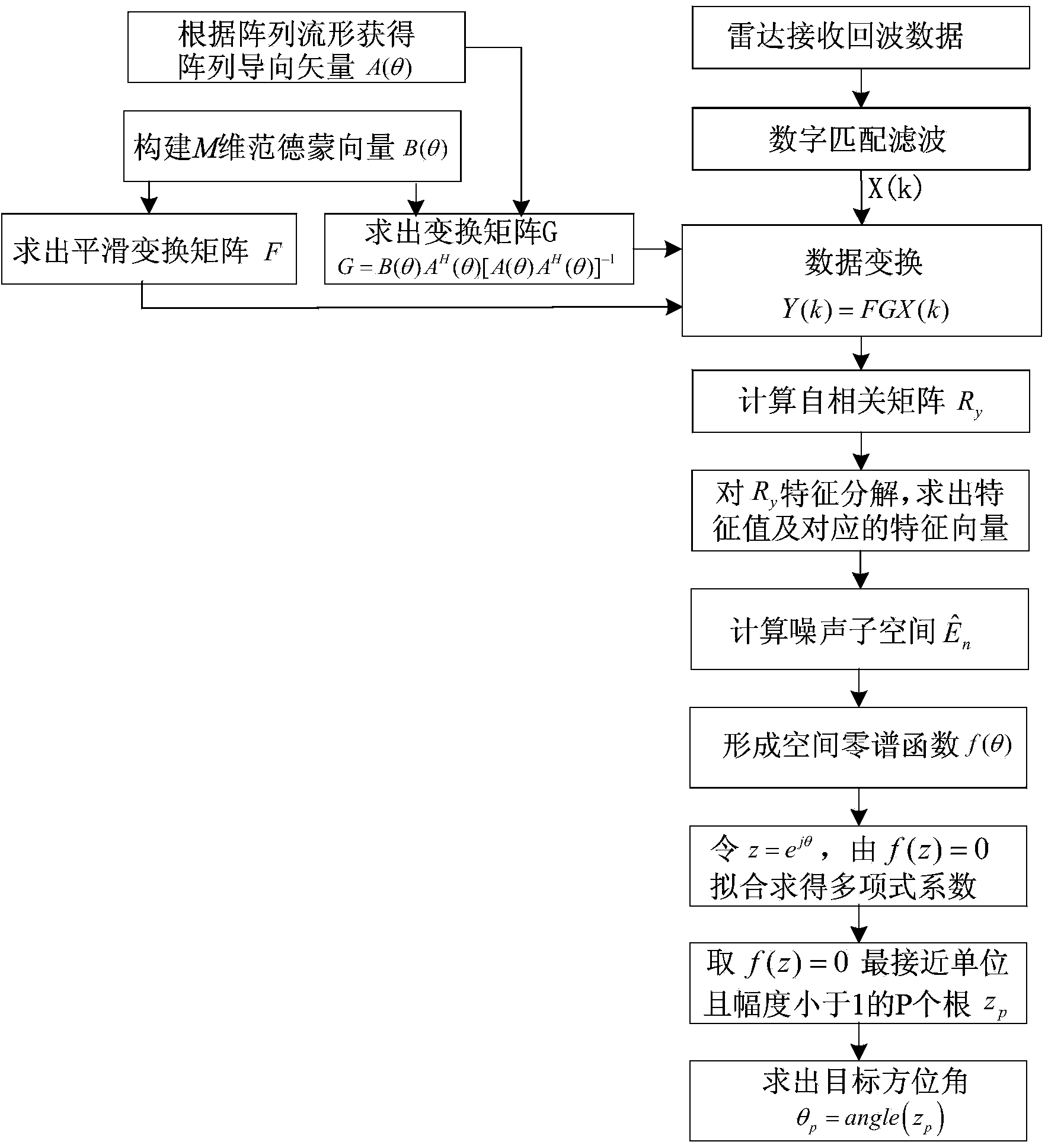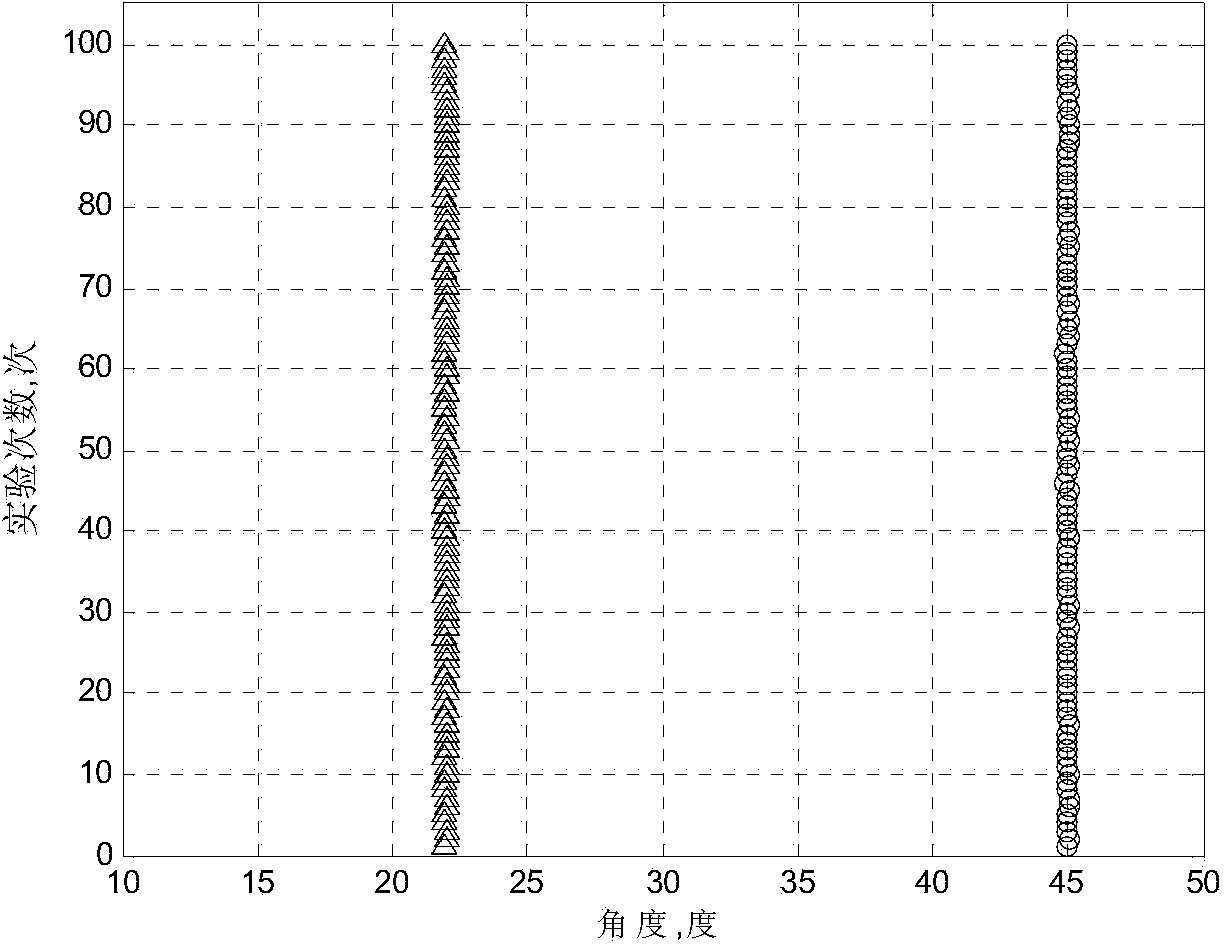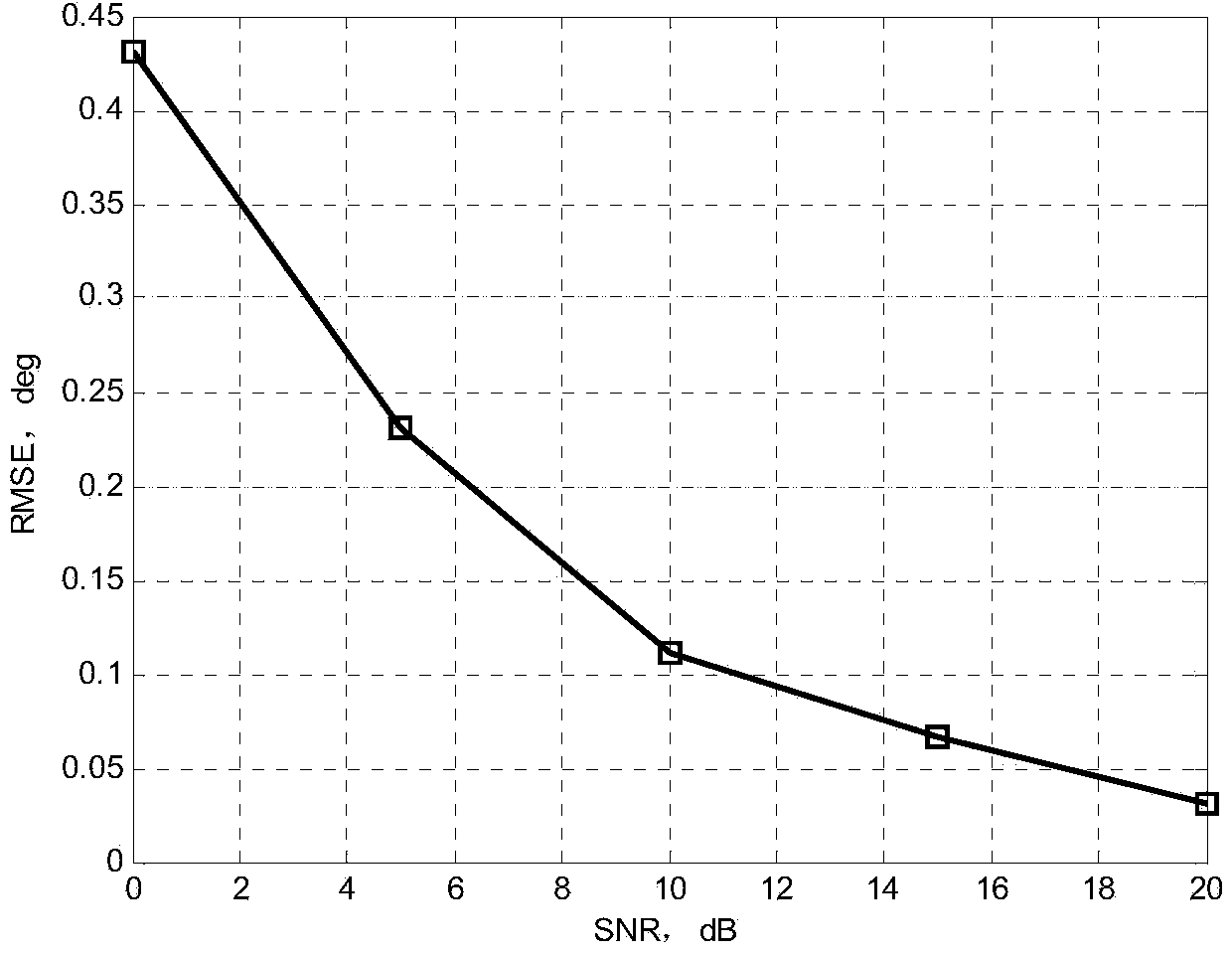Method for direction of arrival estimation of coherent source of single-base MIMO radar
A direction-of-arrival estimation and direction-of-arrival technology, applied in the radar field, can solve problems such as large amount of calculation, deterioration of resolution performance, and decline of coherent source resolution ability, and achieve the effect of reducing the amount of calculation
- Summary
- Abstract
- Description
- Claims
- Application Information
AI Technical Summary
Problems solved by technology
Method used
Image
Examples
Embodiment Construction
[0030] refer to figure 1 , the invention of the monostatic MIMO radar coherent source direction of arrival estimation method, the specific implementation steps are as follows:
[0031] Step 1, according to the array manifold of the monostatic MIMO radar, obtain the array steering vector A(θ).
[0032] Assuming that the single-base MIMO radar array has N array elements (the N array elements are shared by the transceiver), according to the array element distribution, the polar coordinates of each array element can be obtained as (r n ,β n ), n=1,2,...N, N is the number of array elements;
[0033] According to the polar coordinates of each array element (r n ,β n ), to get the transmit steering vector a of the MIMO radar array t (θ) and receiving steering vector a r (θ) are respectively:
[0034] a t ( θ ) = [ e ...
PUM
 Login to View More
Login to View More Abstract
Description
Claims
Application Information
 Login to View More
Login to View More - R&D
- Intellectual Property
- Life Sciences
- Materials
- Tech Scout
- Unparalleled Data Quality
- Higher Quality Content
- 60% Fewer Hallucinations
Browse by: Latest US Patents, China's latest patents, Technical Efficacy Thesaurus, Application Domain, Technology Topic, Popular Technical Reports.
© 2025 PatSnap. All rights reserved.Legal|Privacy policy|Modern Slavery Act Transparency Statement|Sitemap|About US| Contact US: help@patsnap.com



